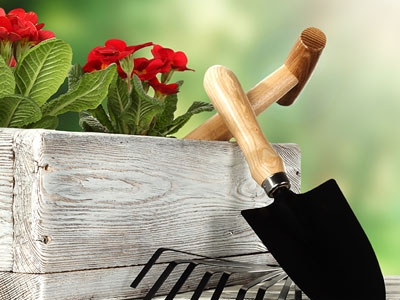Monthly Gardening Advice – November

November
LAWNCARE
- If mild the grass will continue to grow – if this is the case it may be necessary to give the lawn a further trim. Make sure the blades are set to around 4cm (1.5 inches) high.
- Once you have completed the last cut make sure the mower is clean and dry before storing. Remember to drain fuel as unleaded petrol doesn’t keep and may cause issues next year when starting next season. You may consider getting your mower professionally serviced and the blade sharpened.
- Rake fallen leaves off lawns so it doesn’t block out light and air to the grass. Remember to compost the leaves or stack to make leaf mould.
- Avoid walking on the grass on frosty mornings it can damage /blacken the grass.
- If the weather is not too cold you can still lay turf but it’s now too late to sow seed.
- You can still apply an autumn lawn food, which is high in potassium and phosphorous and helps to harden the grass and build a strong root system. You do not want to apply spring or summer feeds as this can lead to lush growth that can be damaged during the winter months.
- Check for water logging – this can be rectified now or in spring.
- Check for toadstools that may appear in autumn and winter. They generally cause little damage to the lawn but are best removed if small children are present.
HOUSEPLANT CARE
- Reduce watering of houseplants as light levels drop.
- Clivia plants do benefit from a rest period over winter months.
- Stand tropical plants on trays of dampened gravel to help create a humid environment, grouping plants together will also help create a humid microclimate.
- Cacti and succulents need a period of dormancy over winter, keep barely moist and apply no feed. Resume watering and feeding in spring.
- Plant up hippeastrum (amaryllis) bulbs for Christmas displays.
JOBS TO DO IN THE GARDEN
- Remove fallen leaves from lawns, pond and borders
- Rise up containers by using pot feed to prevent water logging.
- Continue to plant spring bulbs like tulips and daffodils.
- Plant bare rooted deciduous hedging quickly – this will prevent the plants drying out.
- Plant out wallflowers and other winter bedding.
- Shrubs which are pruned hard back in spring can be cut back by half now e.g. buddleja, lavatera and cornus this will help to prevent wind rock.
- Move trees and shrubs that are growing in an unsuitable position. If they have been growing for several years make sure you remove a large enough root-ball to avoid root disturbance.
- Prune bush and climbing roses.
- Protect newly planted hedges from wind and cold by using a temporary windbreak.
- Now is a fantastic time to plant roses – you will get the pick of the new seasons crop.
- Check that tree ties are secure.
- Deer, rabbits and squirrels may be a problem in winter months use tree guards to stop them gnawing at the bark.
- Do not prune ornamental cherries, plums and almonds as these are all susceptible to silver leaf.
- Rejuvenation pruning on deciduous hedges can be done now, while the plants are dormant e.g. beech, hornbeam and corylus.
- Continue to cut back faded perennials and add these to the compost heap.
- Dig new flower beds so the weather can help breakdown the soil for a better structure for planting in the spring.
- Apply mulch to crowns of plants like agapanthus, kniphofia, and phygelius to protect them from winter weather.
- Take root cuttings of poppies, phlox and verbascum.
JOBS TO DO IN THE GREENHOUSE
- Remove last remaining spent crops and clean and disinfect the greenhouse. Insulation will be needed to help keep the greenhouse frost free when using a greenhouse heater.
- Cyclamen can be sown now in a warm greenhouse but it will take approx 14-16 months to flower.
- Regularly inspect plants for pest and disease.
- Don’t forget ventilation may be required in the warm autumn days.
- Maintain air movement in the greenhouse and conservatory even in the cold to prevent the build-up of fungal disease.
- Check forced bulbs for top growth if growth visible bring into a cool well lit room to induce flowering.
- Try not to wet the leaves when watering to avoid fungal diseases developing – water to the base.
- Remove faded flowers, yellowing leaves and dead leaves to stop the development of disease within the greenhouse.
THE VEGETABLE GARDEN
- Now is the time to sow broad beans in situ – in colder areas fleece or use a cloche to provide insulation as well as protection from pigeons.
- Carrots and peas can be sown in cold frames (milder areas only).
- Stake any Brussel sprout stalks that are leggy and venerable to wind rock..
- Remove any plant debris to help prevent the spread of disease.
- Dig vacant areas and add organic matter ready for planting next year.
- Parsnips can be left in the ground until needed.
- Prune apple, pears, quinces and medlars.
- Continue to harvest leeks, cauliflowers, turnip, swedes, parsnips, spinach, radish, carrots, beetroot and winter cabbage.
- Check stored apples regularly – discard any that are diseased.
- Plant new fruit bushes and trees however delay planting if the ground is waterlogged or frozen.
- Prune autumn raspberries.
WILDLIFE & BIRD CARE
- Leave some seed head and rose hips to provide food and shelter for wildlife.
- Clean out birdbaths and clean bird feeders too.
- Keep birdbaths topped up with fresh water.
- Refill bird feeders, all feeds including peanuts are safe as the breeding season is now over.
- Start building a hedgehog hibernation box.
- Leave mature ivy uncut if possible to provide an excellent source of nectar for insects.
- Make a leaf pile for hibernating mammals and ground feeding birds.
ANY OTHER ADVICE
- Large tubs can crack due to frost so cover with bubble plastic, hessian or fleece to help insulate and prevent cracking. Raise tubs on pot feet or wooden batons to help drainage.
- Look through catalogues, plan and order seeds for next season.
- Place fallen leaves on the compost heap or in separate pen for rotting down into leaf mould shredding first or mowing will help speed up the process.
- Dig bare patches of earth or newly cultivated land to expose many pest larvae and eggs to birds and frost.
- Place mouse controls near your stored fruit and vegetables (follow manufactures instructions).
- Check water butts are installed correctly, pipes are clear and overflows are working.
- Stock up on winter grit / salt.
Enjoy your garden and don’t forget to take time and stop and stare at the wonder of nature. Happy gardening!


